You will need:
- A hammer (make sure that the handle is tapered towards the head of the hammer)
- String
- A ruler
- A desk
- Scissors
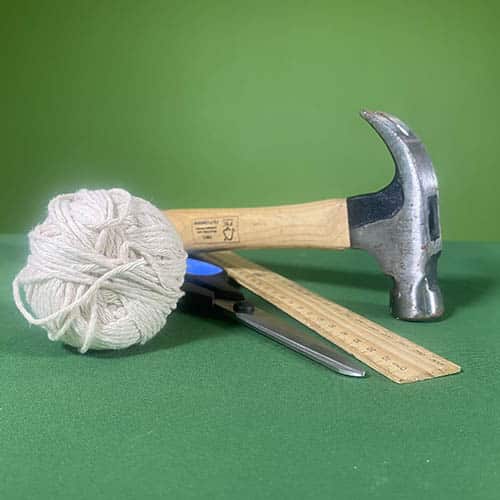
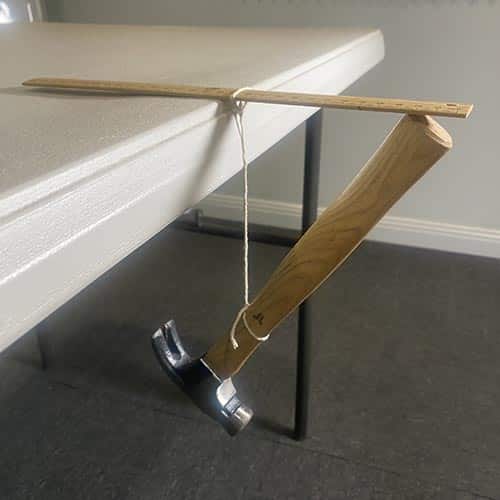
Firstly, check that the floor under your table can handle the hammer to fall on it without breaking. You don’t want to break your kitchen tiles or dent a wooden floor!
Resting the hammer handle on towards the tip of the ruler, place the hammer’s head under the desk and the other end of the ruler on the desk surface. Whilst supporting the hammer, slide the string along the ruler until you can feel that the ruler can support the hammer’s weight. Carefully take your hand away from under the hammer and you should find that your contraption balances itself!
Going further
How far can you move the ruler towards the end of the desk? Do you have to adjust the string’s placement? Why?
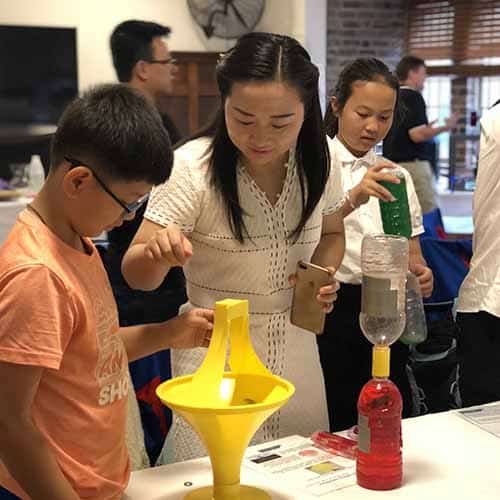
School science visits since 2004!
– Curriculum-linked & award-winning incursions.
– Over 40 primary & high school programs to choose from.
– Designed by experienced educators.
– Over 2 million students reached.
– Face to face incursions & online programs available.
– Early learning centre visits too!
What is going on?
You found the centre of balance!
The weight of the hammer’s head pulled downwards on the ruler end. You would expect that this would make the ruler fall of the table, however that force was transferred back towards the table. As gravity pulls down on the hammer’s head, the handle pushes back upwards on the ruler (you can think of it like a see-saw, where one side goes down and the other side goes up). The string helps this to happen as it acts as fulcrum or pivot point for the hammer to turn on.
By having the majority of the weight of the hammer underneath the table, you were able to balance the hammer as the centre of balance of the whole contraption is under the table rather than off to the side of the table.
Variables to test
- What happens if you use a flexible ruler?
- Can you use different length strings?
- What about different size and shape hammers?
Forces, Friction & Movement
Years K to 6
Maximum 30 students
School workshop
60 or 90 minutes
Online Class Available
STEM Full Day Accelerator - Primary
Designed from real classroom experiences, this modular day helps you create consistently effective science learning that directly address the new curriculum with easily accessible and cost-effective materials.
Hands-on Kids Science Party
>20 hands on science experiments
Gigantic bubbles
Slime making
Professional science show
From $395 inc. GST
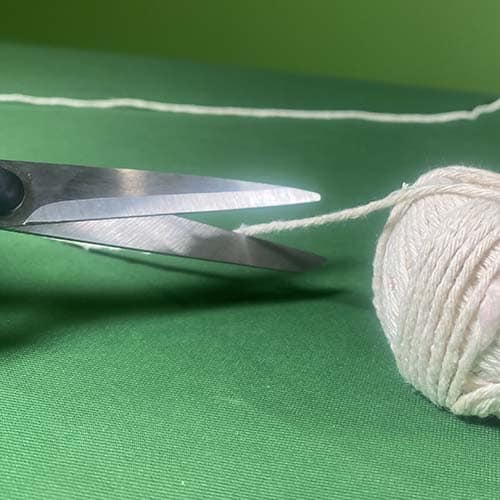
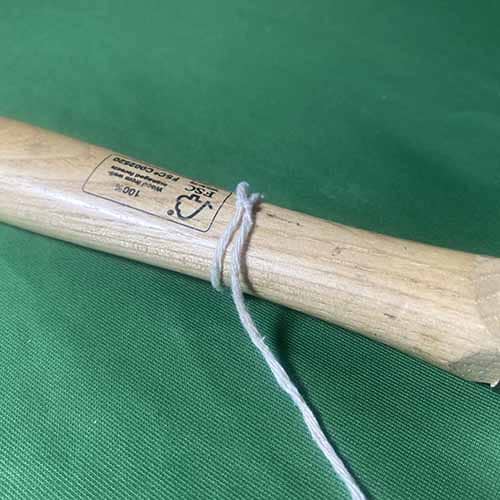
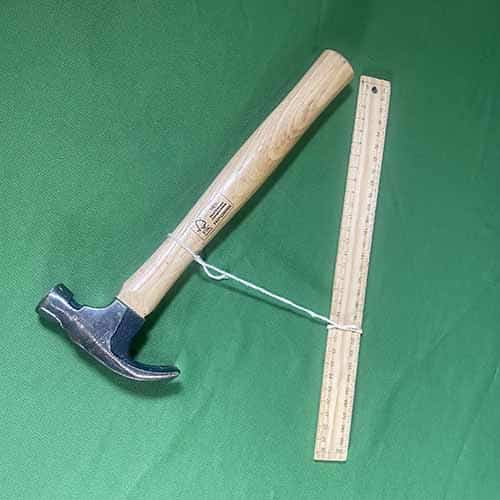
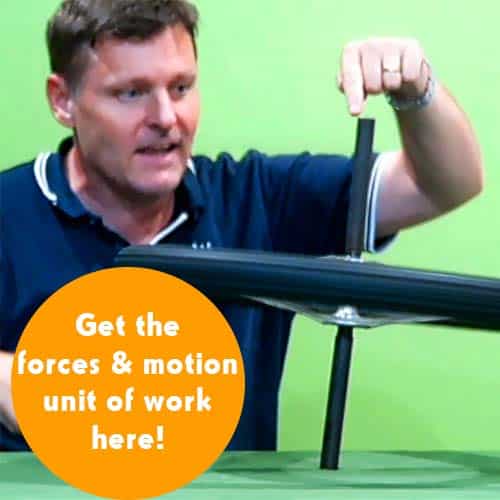


























Comments